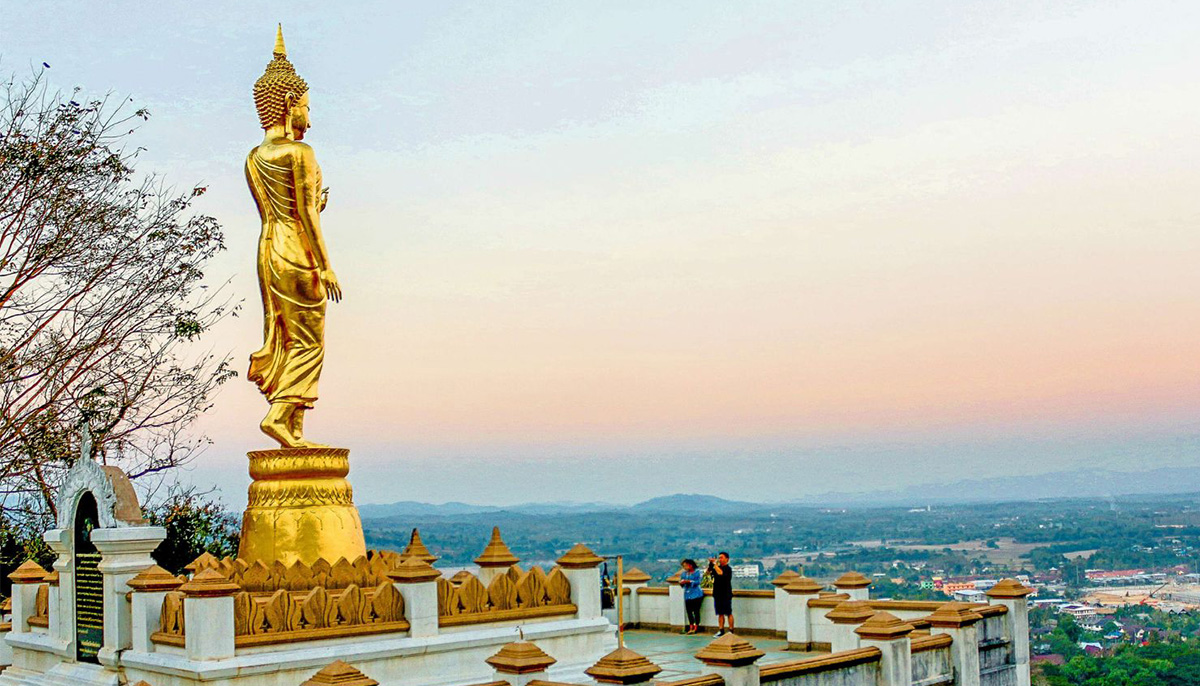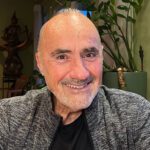My interest in Buddhism began in college. I was raised in a struggling, immigrant family system. My childhood and adolescence were rife with mental illness and tragic loss. When I left home at 17, I was certain that the suffering that had characterized my early life was over and resolved that the rest of my life would focus on joy. When I discovered that the essence of the Buddha’s teachings culminated with “the end of suffering,” I thought, ‘Sign me up!’
I was raised Catholic, but lost interest in high school after I happened upon a copy of Bertrand Russell’s Why I Am Not a Christian. As a gay man, I simply could not bear the hypocrisy of a religion populated by many gay clergy, yet callously homophobic. Still, prayer remained an important part of my life. Family life was constantly traumatic, so I regularly sequestered myself in church for solitude before I went home to the expected chaos. After classes, the church was often empty with no one else around, so I’d kneel in pews to pray. Then and there, I became intimate with silence.
For many years, the sacred silence of empty churches consoled me as I endured their lack of tolerance. This is the resolve that brought me to Thailand, kneeling at the feet of the gargantuan golden Buddha.
As an adult, this contemplative practice expanded. Whenever I felt triggered or stressed, I would find a chapel and just sit still. Eventually, I instinctively started prostrating myself at the altar below the crucifixion. With my face on the granite floor, arms stretched above my head, I’d surrender to a power greater than myself, pleading for strength and guidance. Somatic humility became my ritual balm.
Two decades after I first stepped on the Buddhist path, I landed in Thailand, a place I had vowed to visit since I’d heard it never criminalized homosexuality and was largely regarded as LGBTQ+ friendly. A tall golden Buddha graced the lobby at my hotel on Silom Road, towering over a trickling pond with floating pink lotus and koi below. His hands were positioned in the dharmachakra mudra, which represents transitions, movement, and flow, and embodies the turning of the dharma wheel. Enshrined, this statue of Siddhartha appropriately watched over travelers coming and going. Although I arrived close to midnight, I booked a tour for the very next morning. I fell asleep excited to wake up and explore Ayutthaya, Thailandʼs former capital.
At 8:00 a.m the next morning, I sat jet-lagged yet content on a bus darting through urban bazaars with spices and silks in every color. As we wove through Bangkok, ancient and modern temples appeared alongside saffron robes, alms bowls, and magenta bougainvillea. Small and large stupas were everywhere — sturdy, creative signs of integrated spiritual devotion. Our first stop was at a giant gold Buddha standing four stories high. His toes were as big as the children laying white and lilac dendrobium at his feet. I looked up and breathed deeply, completely enchanted.

After two hours of driving into the countryside, we arrived at Siam’s former Imperial Palace, burned to the ground by Burmese armies in 1767. I wandered among the surviving 15-foot Buddhas carved in stone, which had sat in silent ruin since the war. An immense, conical stupa stood ornately embossed with thousands of periwinkle and custard-colored ceramic flowers. Their dark green leaves criss-crossed burgundy tiles in diagonals.
Climbing the two stories of increasingly smaller steps to the top, I found a seated, red lacquer Buddha, the size of a thimble. Incense ash and wilted chrysanthemums encircled him. I slowly realized I was surrounded by a breathtaking panorama. From this elevation, I could see four rows of Buddhas sitting in noble silence, some draped in orange organza. Sweeping mango trees were abundant, their laden branches almost touching the ground. At a distance, a large white temple beckoned me with its bright red roof and dazzling gilded gables.
Ultimately, insight arose as simple as the serenity on the huge, gold Buddhaʼs face.
As I descended the stupa in Ayutthaya, I didn’t know what to expect as I approached the first traditional Buddhist temple I’d visited in a Buddhist country, but I felt open. A demure monk requested I leave my shoes outside the door of Phra Mongkhon Bophit. I took a few steps into the sanctuary and suddenly felt the presence of another colossal, forty-foot Buddha, gargantuan and shining, all in gold. Sitting lotus, his knees spanned the entire temple. He was ten times taller than the entrance. As my eyes took in the wonder, a sense of overwhelm rose in my belly, swelling up into my chest and throat. I wasn’t quite sure what to do so I knelt at his feet as I had at the crucifix in church. My heart pounded as I inhaled deeply for four counts, held for another four, and exhaled slowly for seven. After three of these breaths, relaxation replaced my anxiety. My eyes stayed closed as strong emotions subsided in the tropical heat. As a bead of sweat dribbled down my forehead, a wave of clarity washed over me like the jasmine breeze that followed me into the sanctuary.

I was born in Malta and identify as an Arab-American. Growing up, I prayed to Jesus, his hands and feet brutally nailed to a cross and his iconic, tortured face dripping blood from a crown of thorns. Worshiping this image of divine suffering and gore invoked both awe and fear, guilt and shame. Although Jesus is often referred to as the Prince of Peace, the countless wars waged in his name illustrate an atrocious history that scars the face of human decency. And yet, for many years, the sacred silence of empty churches consoled me as I endured their lack of tolerance. Even as a young man, I refused to be demonized. This is the resolve that brought me to Thailand, kneeling at the feet of the gargantuan golden Buddha. Finally composed, my knees began to ache. I opened my eyes and looked up.
Ultimately, insight arose as simple as the serenity on the huge, gold Buddhaʼs face. As I gazed up at the Buddha, I thought to myself, “Oh, look! Heʼs smiling.” I found myself smiling back and then and there I made a vow: “Iʼm switching!”
I returned home to Seattle knowing I should start meditating but didn’t put my inclination into practice. Two years later, the global shock of 9/11 triggered historic, family trauma — I knew there was no time to waste. There never is. A friend invited me to dinner, but then called to postpone because she wanted to go to a community meditation before our meal. I pleaded with her, “Please, please — can I go with you?”

